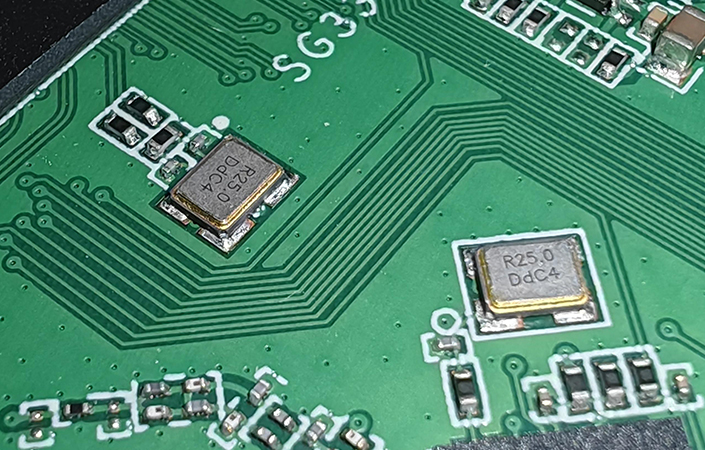8 pieces! Answering why crystal oscillators are designed next to ICs
In the layout and design of IC integrated circuits, placing the crystal oscillator (crystal oscillator) near the IC (integrated circuit) is an optimized approach. TROQ Chuangjie Electronics has summarized the following 8 points for you:
1. Signal stability: The crystal oscillator is a key component for generating stable clock signals. Placing the crystal oscillator near the IC can minimize the loss and interference of clock signal transmission. The shorter the transmission distance of the signal, the higher the stability of the clock signal. This is because the transmission of signals may be affected by various factors such as electromagnetic interference, resistance, capacitance, etc., all of which can lead to signal distortion or attenuation. Therefore, placing the crystal oscillator near the IC can ensure the clarity and accuracy of the clock signal, thereby improving the performance of the entire system.

2. Transmission efficiency: When the clock signal passes through a long transmission line, it will generate a small transmission delay. Microcontrollers typically have very high clock frequencies, and any small delay can have a significant impact on system performance. Placing the crystal oscillator near the IC can shorten the transmission distance of the clock signal, thereby reducing transmission delay. This helps to improve the response speed and overall performance of the system, especially in applications that require high-speed data transmission and processing.
3. Anti interference ability: The clock signal generated by the crystal oscillator has a certain amount of electromagnetic radiation. If placed too far away from other electronic components, it may produce electromagnetic interference (EMI). Placing the crystal oscillator near the IC can reduce this interference and improve the electromagnetic compatibility of the system. It can minimize the impact of external interference on clock signals, ensure stable operation of the system in complex electromagnetic environments, and reduce the occurrence of faults and errors.
4. Power management: Placing the crystal oscillator near the IC also helps with power management. The operation of a crystal oscillator requires a stable power supply. Placing it near the IC can ensure a more direct and stable power line connection, reduce the impact of power fluctuations on the operation of the crystal oscillator, and thus maintain its stable operation.
5. Thermal management: Crystal oscillators generate a certain amount of heat during operation, especially in high-frequency or high-temperature environments. Therefore, when placing the crystal oscillator near the integrated circuit, thermal management factors need to be considered. Usually, designers choose to place crystal oscillators near the heat sinks or holes of integrated circuits to effectively dissipate heat and prevent performance degradation or equipment damage caused by heat accumulation.
6. Layout optimization: In the layout design of electronic devices, it is usually necessary to consider the spatial relationships and mutual influences between components. The size and shape of the crystal oscillator may limit its placement on the circuit board. Placing the crystal oscillator near the IC can optimize the layout, improve the compactness and reliability of the overall circuit board, while meeting the requirements of signal quality, transmission efficiency, and electromagnetic compatibility.
7. Compatibility considerations: Certain specific ICs may need to be used in conjunction with specific types of crystal oscillators to ensure optimal performance and compatibility. Placing the crystal oscillator near the IC can ensure a more direct and reliable connection between them, reducing compatibility issues caused by long circuits or signal interference.
8. Cost considerations: Although placing the crystal oscillator near the integrated circuit may bring some advantages, it may also increase the complexity and cost of the design. For example, it may be necessary to use more advanced wiring techniques or more expensive materials to ensure signal quality and electromagnetic compatibility. Therefore, in design, it is necessary to comprehensively consider these factors in order to find the optimal balance point.
In summary, placing the crystal oscillator near the IC is due to various considerations such as signal stability, transmission delay, anti-interference ability, power management, layout optimization, and compatibility. This layout design helps to ensure that electronic devices can operate efficiently and stably, improve system performance and reliability, and ensure that digital circuits can function properly.









